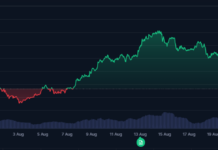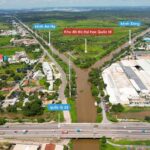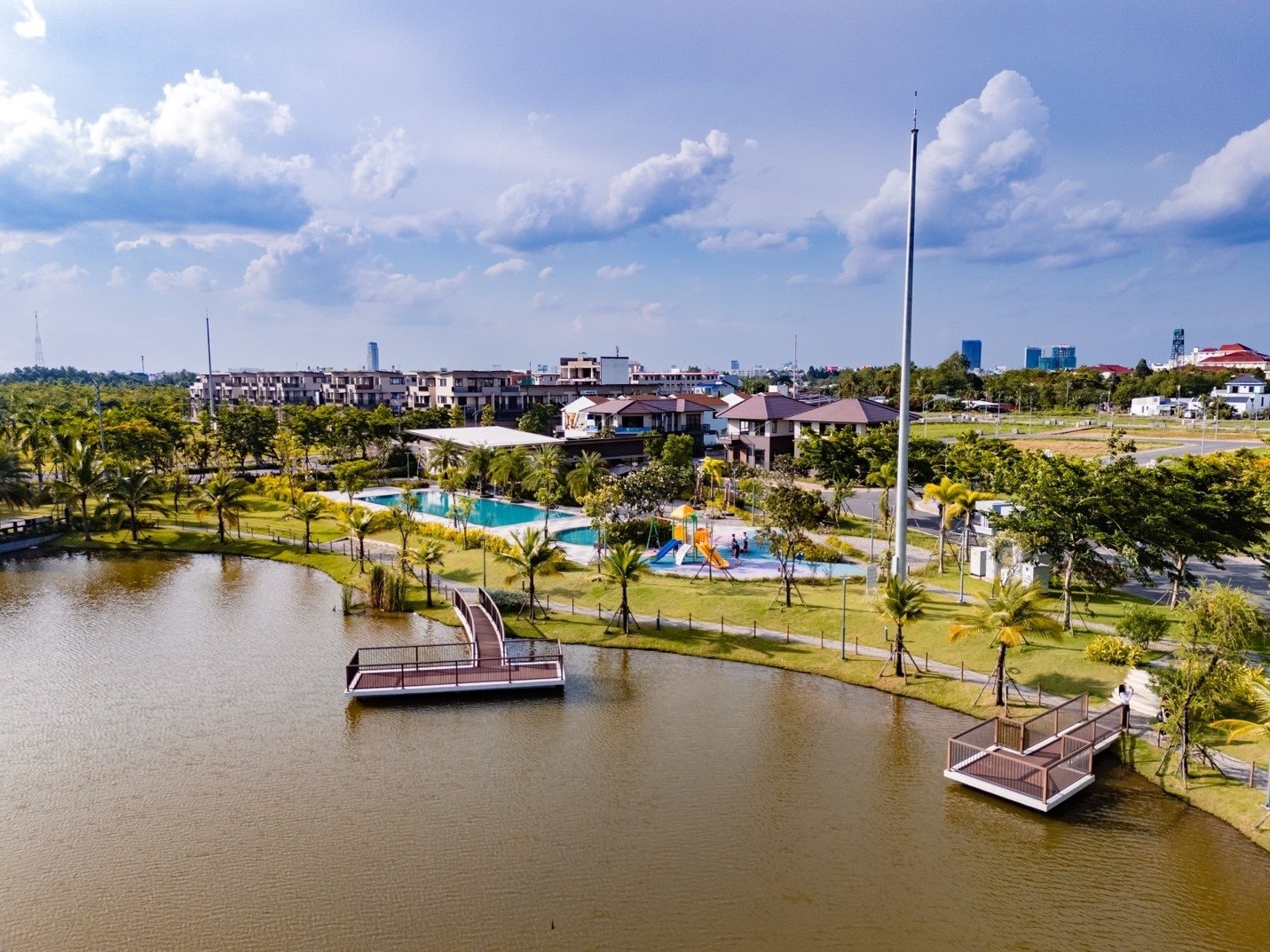
Satellite Cities: Infrastructure and Price Growth
Price Hikes Tied to Infrastructure Development
At the recent “Satellite Wave” real estate forum in Ho Chi Minh City, Mr. Nguyen Khanh Duy, Director of Residential Sales at Savills Vietnam, emphasized that a successful satellite city must first attract residents. To achieve this, satellite cities need to focus on connectivity infrastructure and maintain a commuting distance of 30-40km (approximately 40-45 minutes) to the city center. Additionally, property prices should be 40-50% lower than in the central areas. These factors make real estate near Ho Chi Minh City attractive to investors.
The latest data from DKRA Consulting reveals significant price disparities. In Ho Chi Minh City, the highest price for a townhouse or villa reaches VND 700 billion per unit. In Dong Nai, it’s VND 228 billion, and in Tay Ninh, VND 39 billion. This shows that prices in Ho Chi Minh City are 18 times higher than in Tay Ninh and over three times higher than in Dong Nai, highlighting substantial regional price gaps.
Mr. Vo Huynh Tuan Kiet, Residential Director at CBRE Vietnam, stressed that infrastructure connectivity significantly impacts satellite city real estate, directly influencing price levels. This is evident in areas like former Binh Duong, Dong Nai, and Long An (now Tay Ninh), where property prices have surged. Specifically, apartment prices in former Binh Duong rose by 14% annually, Dong Nai by 15%, and former Long An by 90%.
According to CBRE Vietnam, from now until 2027, both supply and prices in these areas will continue to rise. For apartments, prices in Binh Duong are expected to increase by 11% annually, Dong Nai by 10%, and former Long An by 19%. For landed properties, Binh Duong will see a 4% annual increase, Dong Nai 6%, and Long An 12%.
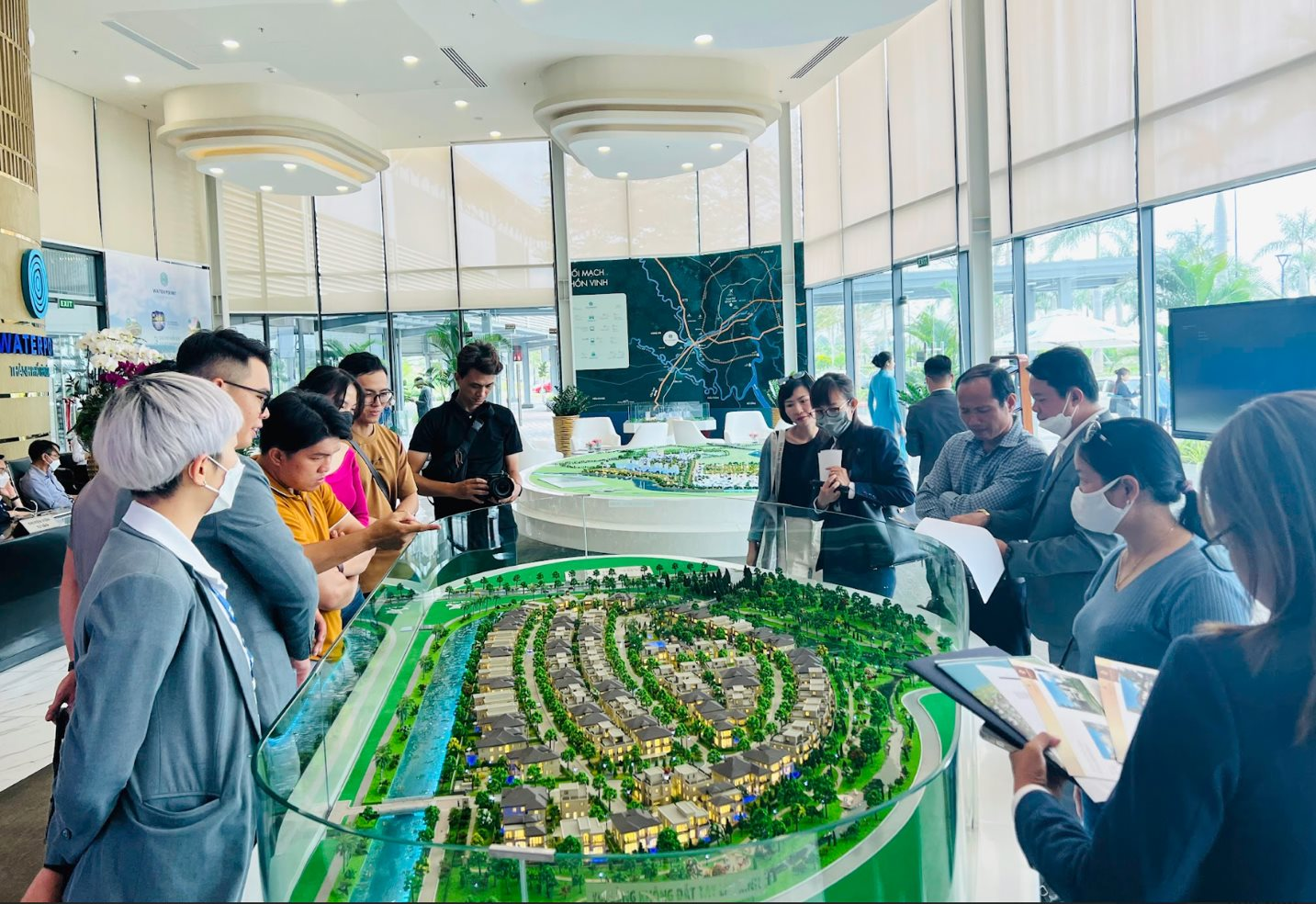
80% of new real estate supply will come from satellite areas. Illustrative image.
Mr. Kiet noted that in the coming period, instead of focusing on the inner city, about 80% of new supply will originate from satellite areas, primarily large-scale urban projects. This reflects the growing appeal of satellite markets as regional infrastructure improves.
Nam Long Group leads in developing integrated urban areas in Ho Chi Minh City’s satellite regions, with over 680 hectares of clean land across key economic zones. All their urban projects are linked to strategic infrastructure, ensuring regional connectivity.
In the southern market, Nam Long is accelerating projects like Waterpoint (355 hectares in former Long An) along the Ho Chi Minh City – Trung Luong Expressway, connected to Ring Road 4; Izumi City (170 hectares in Dong Nai) near the Ho Chi Minh City – Long Thanh – Dau Giay Expressway; Mizuki Park (26 hectares in Binh Chanh) with access to Nguyen Van Linh Avenue, National Highway 50, and Metro Line 4; and Nam Long II Central Lake (43.8 hectares in Can Tho), benefiting from regional infrastructure like the Nam Song Hau route, National Highway 1A, and the Can Tho – Ca Mau Expressway.
In the north, Nam Long ADC is developing An Zen Residences in Hai Phong, a 1.5-hectare project offering 887 EHome apartments.
Vingroup is also transforming the southern real estate landscape with projects like Vinhomes Green City (nearly 200 hectares, VND 28 trillion investment) in Hau Nghia – Duc Hoa, Vinhomes Phuoc Vinh Tay (over 1,000 hectares, VND 90 trillion investment) in Can Giuoc, and the new Tan My urban area (930 hectares, VND 74.5 trillion investment).
T&T Group’s T&T City Millennia (267 hectares) in Ho Chi Minh City’s satellite area offers townhouses, semi-detached villas, and apartments. Ecopark’s Eco Retreat (over 200 hectares in Tay Ninh) provides 7,700 low-rise and apartment units. Similarly, Prodezi Long An’s La Homes (over 100 hectares) offers townhouses, shophouses, and apartments, attracting market interest due to its convenient connectivity.
Strong Population Decentralization Trend
CBRE Vietnam experts highlight a growing trend of population decentralization from Ho Chi Minh City to satellite urban areas, driven by improved transportation infrastructure. In Ho Chi Minh City, luxury and high-end apartments in District 1, former District 3, and Thu Thiem New Urban Area face liquidity challenges due to high prices. In contrast, Long An and Dong Nai, bordering Ho Chi Minh City, are seeing rapid price growth and abundant supply, fueled by infrastructure development and strong decentralization.
Mr. Dinh Minh Tuan, Director of Batdongsan.com.vn in the Southern region, emphasized that as supply shifts to satellite urban areas, integrated urban models are gaining attention. These projects, offering living, learning, working, and entertainment in one space, are setting new living standards.
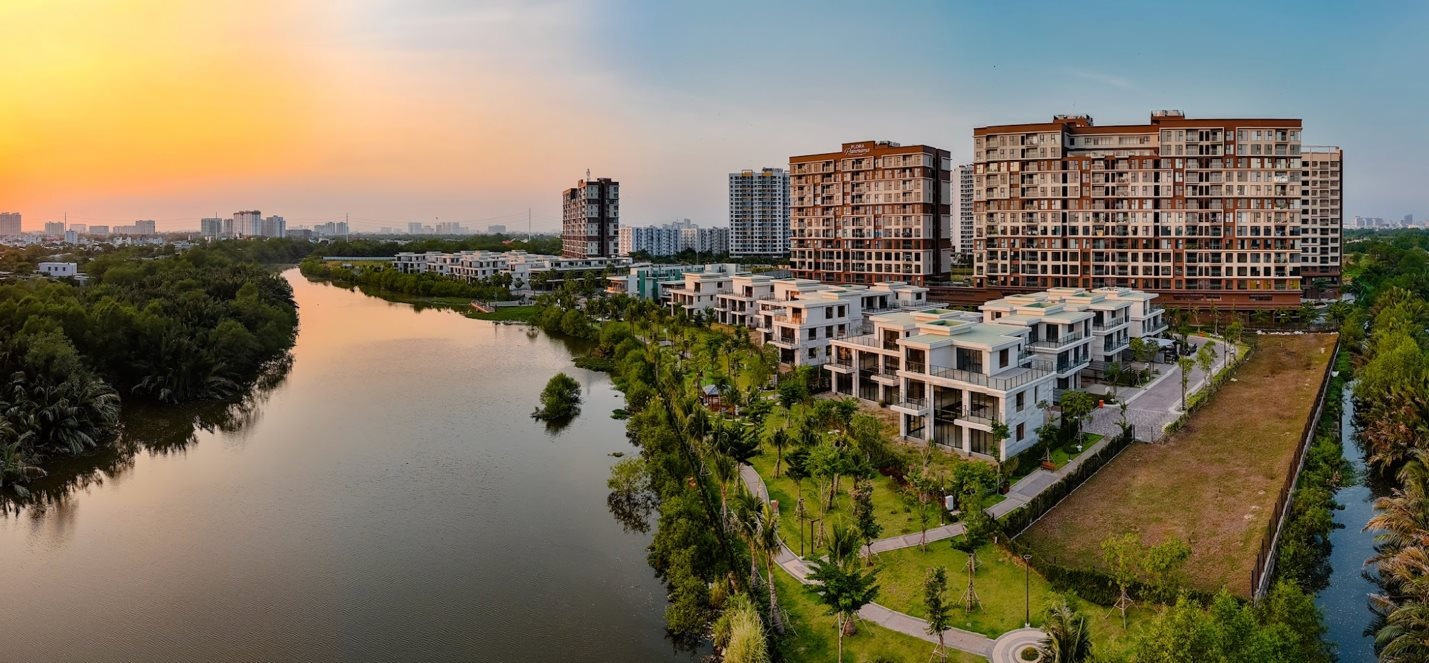
Ho Chi Minh City’s real estate market is shifting towards a multi-polar structure.
Mr. Tuan noted that Ho Chi Minh City’s real estate has long operated under a “single-core” structure, with Districts 1, 3, and 5 as the traditional CBD. Prices in these central areas influence surrounding regions, creating a price hierarchy based on distance and infrastructure. However, the market is now moving towards a multi-polar structure, driven by three factors: infrastructure breakthroughs, affordable satellite property prices, and decentralization opportunities.
“With Ho Chi Minh City’s central density at 30,000 people/km², decentralization is inevitable. Residents are moving to areas with cleaner environments, good connectivity, and affordable property prices,” Mr. Tuan stressed.
Dr. Nguyen Van Khoi, Chairman of the Vietnam Real Estate Association, noted that developing “livable” satellite cities requires strong links to transportation, social services, and industrial-commercial infrastructure. Supportive policies, streamlined legal procedures, and stable planning are essential for long-term business strategies.
Vinhomes Green Paradise: Khải Hoàn Land Officially Partners as Exclusive Distributor
With over a decade of partnership and growth, Khải Hoàn Land and Vinhomes have solidified their enduring collaboration by recently signing a distribution agreement for the mega urban development, Vinhomes Green Paradise.
























